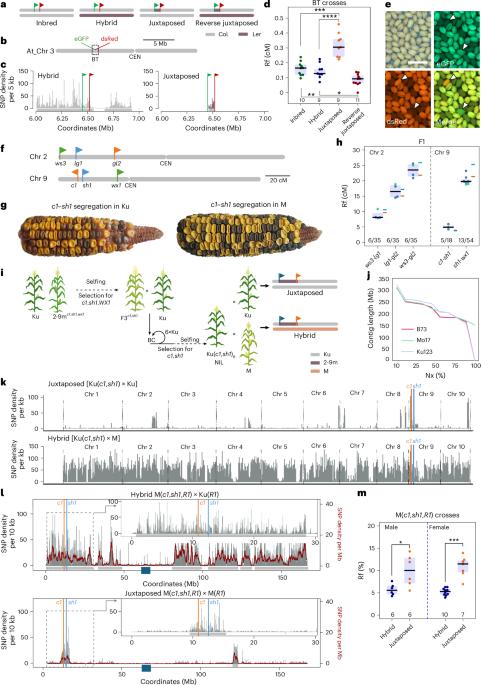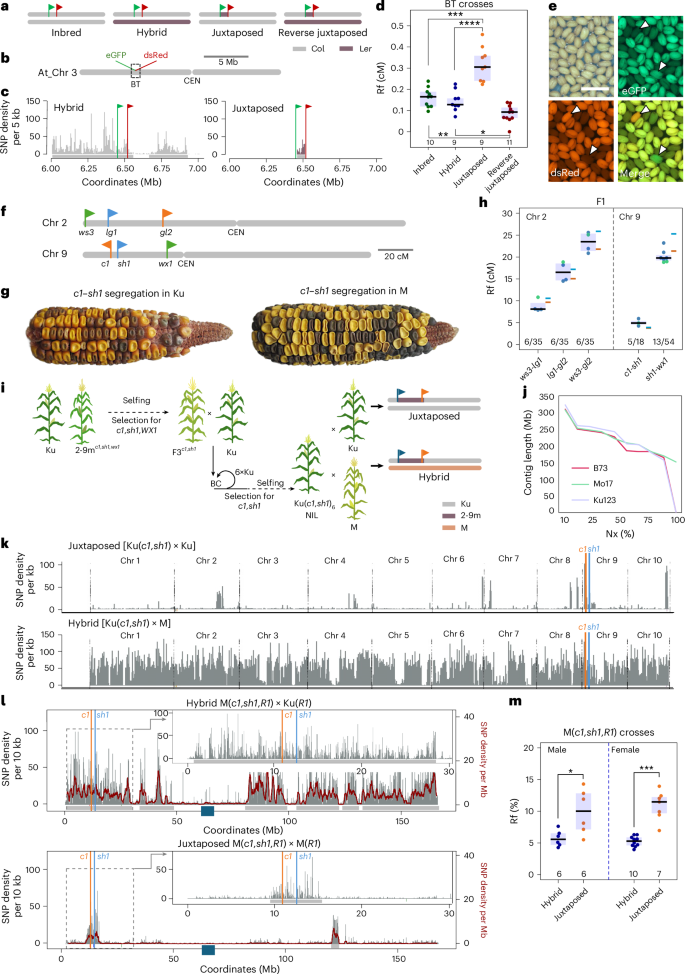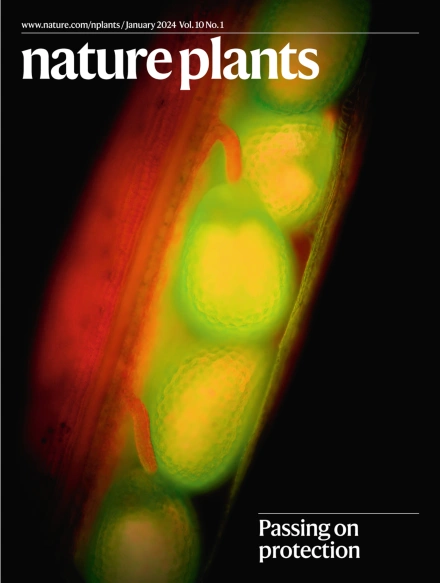Enhancing local meiotic crossovers in Arabidopsis and maize through juxtaposition of heterozygous and homozygous regions
IF 13.6
1区 生物学
Q1 PLANT SCIENCES
引用次数: 0
Abstract
Meiotic crossovers, which exchange DNA between homologous chromosomes, are vital for accurate segregation and generate genetic diversity. In plant breeding, they help create new haplotypes by combining beneficial alleles. In Arabidopsis, heterozygous regions in an otherwise homozygous background attract more crossovers than in full F1 hybrids—a phenomenon so far observed only in this self-fertilizing species. Here we report a similar effect in outcrossing maize: local crossover rates increase up to threefold in regions where polymorphism is spatially confined compared to full hybrids. This stimulation occurs in both male and female meiosis and is strongest when heterozygous regions fully span the measured area, likely due to crossover redistribution. As Arabidopsis and maize represent distantly related plant lineages (eudicots and monocots), this shared phenomenon suggests a conserved mechanism. Importantly, it provides a tool for breeding, offering a way to boost recombination and accelerate the introgression of desired traits using interhomologue polymorphism. This study discovered that locally confined DNA differences boost crossover rates in both Arabidopsis and maize, revealing a conserved mechanism that can accelerate plant breeding and trait introgression.


通过杂合区和纯合区并置增强拟南芥和玉米的局部减数分裂杂交
减数分裂交叉是在同源染色体之间交换DNA,对于精确分离和产生遗传多样性至关重要。在植物育种中,它们通过结合有益的等位基因帮助创造新的单倍型。在拟南芥中,纯合背景下的杂合区域比完全的F1杂交种吸引更多的杂交,这种现象迄今为止只在这种自交物种中观察到。在这里,我们报告了异种杂交玉米的类似效应:在多态性空间局限的区域,与完全杂交相比,本地杂交率增加了三倍。这种刺激在雄性和雌性减数分裂中都存在,当杂合区域完全跨越测量区域时最强烈,可能是由于交叉再分配。由于拟南芥和玉米是亲缘关系较远的植物谱系(双子叶和单子叶),这种共同现象表明存在一种保守机制。重要的是,它为育种提供了一种工具,提供了一种利用同源间多态性促进重组和加速所需性状渗入的方法。
本文章由计算机程序翻译,如有差异,请以英文原文为准。
求助全文
约1分钟内获得全文
求助全文
来源期刊

Nature Plants
PLANT SCIENCES-
CiteScore
25.30
自引率
2.20%
发文量
196
期刊介绍:
Nature Plants is an online-only, monthly journal publishing the best research on plants — from their evolution, development, metabolism and environmental interactions to their societal significance.
 求助内容:
求助内容: 应助结果提醒方式:
应助结果提醒方式:


